2-NITRO-1-PROPANOL
- CAS NO.:2902-96-7
- Empirical Formula: C3H7NO3
- Molecular Weight: 105.09
- MDL number: MFCD00007398
- EINECS: 220-797-0
- SAFETY DATA SHEET (SDS)
- Update Date: 2023-05-04 17:34:37
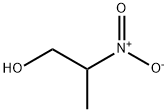
What is 2-NITRO-1-PROPANOL?
The Uses of 2-NITRO-1-PROPANOL
2-Nitro-1-propanol is used in an improved synthesis of 2,2,2-trinitroethyl ethers.
The Uses of 2-NITRO-1-PROPANOL
2-Nitro-1-propanol is used in improved synthesis of 2,2,2-trinitroethyl ethers, inhibits methane production during in vitro ruminal fermentation.
The Uses of 2-NITRO-1-PROPANOL
2-Nitro-1-propanol was used in improved synthesis of 2,2,2-trinitroethyl ethers.
What are the applications of Application
2-Nitro-1-propanol is used in improved synthesis of 2,2,2-trinitroethyl ethers
Definition
ChEBI: 2-nitro-1-propanol is a C-nitro compound.
General Description
2-Nitro-1-propanol inhibits methane production during in vitro ruminal fermentation. It is a useful antimicrobial supplement which reduces carriage of certain food-borne pathogens in animals.
Properties of 2-NITRO-1-PROPANOL
| Melting point: | -20°C (estimate) |
| Boiling point: | 72-74 °C/1 mmHg (lit.) |
| Density | 1.185 g/mL at 25 °C (lit.) |
| refractive index | n |
| Flash point: | 212 °F |
| storage temp. | 2-8°C |
| pka | 7.36±0.13(Predicted) |
| form | liquid (clear) |
| color | clear green-yellow |
| Water Solubility | Slightly soluble in water. |
| BRN | 1748592 |
Safety information for 2-NITRO-1-PROPANOL
| Signal word | Danger |
| Pictogram(s) |
 Flame Flammables GHS02  Exclamation Mark Irritant GHS07 |
| GHS Hazard Statements |
H228:Flammable solids H315:Skin corrosion/irritation H319:Serious eye damage/eye irritation |
| Precautionary Statement Codes |
P210:Keep away from heat/sparks/open flames/hot surfaces. — No smoking. P240:Ground/bond container and receiving equipment. P241:Use explosion-proof electrical/ventilating/lighting/…/equipment. P264:Wash hands thoroughly after handling. P264:Wash skin thouroughly after handling. P280:Wear protective gloves/protective clothing/eye protection/face protection. P302+P352:IF ON SKIN: wash with plenty of soap and water. P305+P351+P338:IF IN EYES: Rinse cautiously with water for several minutes. Remove contact lenses, if present and easy to do. Continuerinsing. P332+P313:IF SKIN irritation occurs: Get medical advice/attention. P337+P313:IF eye irritation persists: Get medical advice/attention. P370+P378:In case of fire: Use … for extinction. |
Computed Descriptors for 2-NITRO-1-PROPANOL
New Products
Tert-butyl bis(2-chloroethyl)carbamate (S)-3-Aminobutanenitrile hydrochloride N-Boc-D-alaninol N-BOC-D/L-ALANINOL N-octanoyl benzotriazole 4-Hydrazinobenzoic acid 3,4-Dibenzyloxybenzaldehyde Electrolytic Iron Powder 1,1’-CARBONYLDIIMIDAZOLE R-2-BENZYLOXY PROPIONIC ACID 4-HYDROXY BENZYL ALCOHOL 1,1’-CARBONYLDI (1,2-4 TRIAZOLE) S-2-CHLORO PROPIONIC ACID (2-Hydroxyphenyl)acetonitrile 4-Bromopyrazole 5-BROMO-2CYANO PYRIDINE 5,6-Dimethoxyindanone 5-broMo-2-chloro-N-cyclopentylpyriMidin-4-aMine 3-(2,4-Dimethoxybenzyl)dihydropyrimidine-2,4(1H,3H)-dione 6-Bromo-3-iodo-1-methyl-1H-indazole 4-Ethylbenzylamine N-(5-Amino-2-methylphenyl)acetamide 2-(BOC-Amino)4-picoline 1-(4-Methylphenylsulfonyl)-1H-1,2,3-benzotriazoleRelated products of tetrahydrofuran
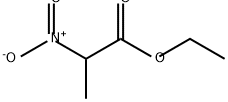
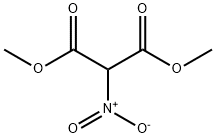
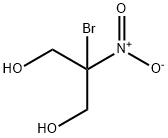

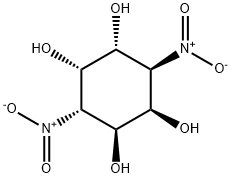

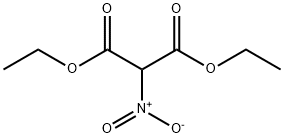

You may like
-
 100-71-0 99%View Details
100-71-0 99%View Details
100-71-0 -
 2 2-BIS(2-HYDROXYETHOXY)-1 1-BINAPHTHYL 99%View Details
2 2-BIS(2-HYDROXYETHOXY)-1 1-BINAPHTHYL 99%View Details
55441-95-7 -
 Chloro Uracil 1820-81-1 99%View Details
Chloro Uracil 1820-81-1 99%View Details
1820-81-1 -
 181228-33-1 (S)-Methyl 3-amino-2-((tert-butoxycarbonyl)amino)propanote Hydrochloride (DAP-OMe. HCl) 99%View Details
181228-33-1 (S)-Methyl 3-amino-2-((tert-butoxycarbonyl)amino)propanote Hydrochloride (DAP-OMe. HCl) 99%View Details
181228-33-1 -
 2-ethyl-6-methyl-3-hydroxypyridine succinate 127464-43-1 99%View Details
2-ethyl-6-methyl-3-hydroxypyridine succinate 127464-43-1 99%View Details
127464-43-1 -
 13162-05-5 N-Vinylformamide 99%View Details
13162-05-5 N-Vinylformamide 99%View Details
13162-05-5 -
 1446013-08-6 98%View Details
1446013-08-6 98%View Details
1446013-08-6 -
 Ste-Glu-AEEA-AEEA-OSUView Details
Ste-Glu-AEEA-AEEA-OSUView Details
1169630-40-3
Statement: All products displayed on this website are only used for non medical purposes such as industrial applications or scientific research, and cannot be used for clinical diagnosis or treatment of humans or animals. They are not medicinal or edible.